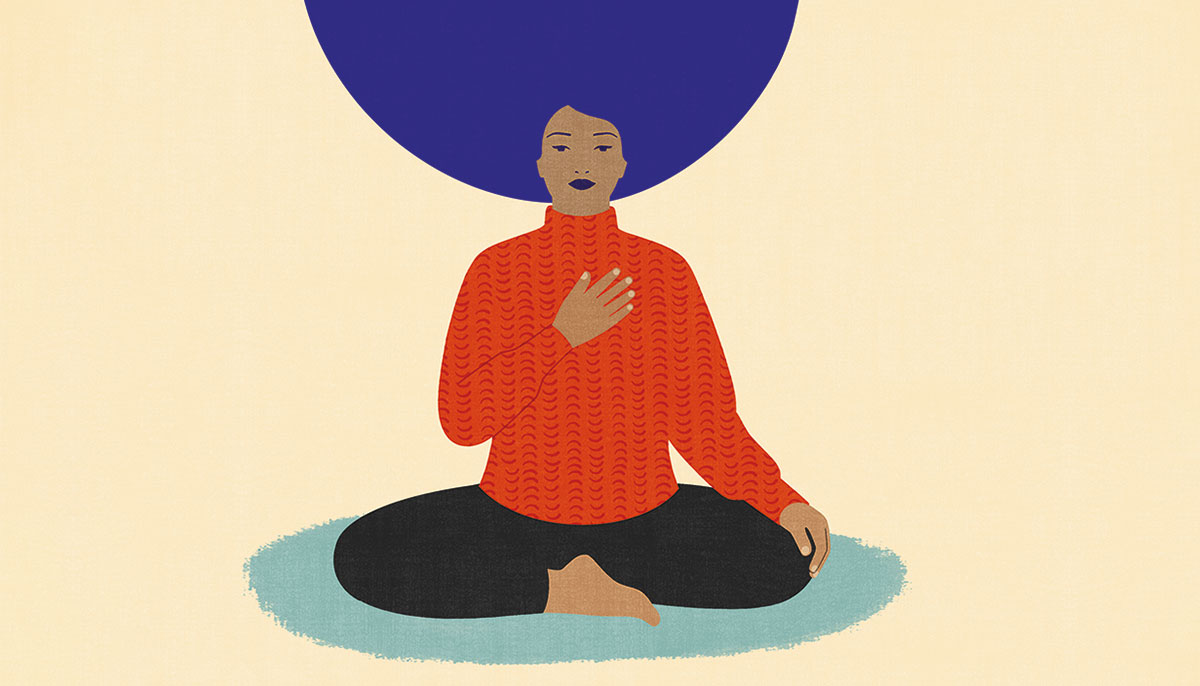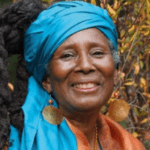I have experienced illness, heartbreak, aging, and disability. As a Black, elder, cis-gendered woman, I live with the trauma of social oppression on a daily basis. Like many of us, I’m also profoundly disturbed by the current suffering in the world.
In these troubled and troubling times, metta (loving-kindness) is my foundational practice. I am truly grateful for metta meditation, and I practice when I’m afraid, uncertain, or despairing. Metta helps me stay grounded and keeps my heart open to others. I use it to send affirmations of unconditional love to friends and benefactors, and to affirm the well-being and safety of survivors of climate catastrophe, war, and social injustice.
The term metta comes from a Pali word connoting benevolence at both the individual and collective levels. English words that convey its meaning include friendliness, amicability, goodwill, altruism, unconditional love, and nonviolence. In many English-speaking dharma circles in the United States, metta is translated as loving-kindness in order to better distinguish it from love based on selfishness or wanting something back.
According to the Buddhist tradition, metta was developed to aid a group of monks who had entered a forest to practice meditation. Engrossed in their practice, the monks failed to notice that the land they’d entered was inhabited; it was the abode of tree spirits, animals, and other sentient life forms. Assuming that the monks would only be meditating in the area for a short time, the spirits initially vacated out of respect. However, after days passed without the monks leaving, the tree spirits became angry and attempted to chase the monks away. They sent frightening visions, made loud and disturbing sounds, and created unwholesome smells, which so disconcerted the monks that they were unable to practice.
When the monks returned to the Buddha, he told them to go back to the forest and begin metta practice. That is, they were to offer loving-kindness to all beings—seen and unseen—in the forest. So, that’s what the monks did. They sent affirmations of goodwill, friendliness, and loving-kindness to all beings in the area. This soothed and mollified the angry tree spirits, and in return they supported the monks for the entirety of their stay.
The Buddha asked the monks to cultivate love in their hearts for everyone, regardless of the configurations of their bodies, how distant or close they lived, or their perceived worthiness or unworthiness. In his time, these instructions repudiated the unjust treatment of lower caste people. In our times, I believe metta practice asks that we reject social oppressions, such as racism, classism, homophobia, nativism, transphobia, ableism, anti-Semitism, and Islamophobia. In practicing metta, we relinquish feelings of anger, hatred, or superiority—feelings that lead to the “othering” of those different from us.
Instead of using the image of a warrior to combat fear, the Buddha invoked the image of a mother, protecting her child. Mothers—or parents—may not have any specialized training, but the force of their love enables them to perform miraculous acts to support their children. In practicing metta, we aspire to bring this loving care not just to our own families, but to all sentient life. According to the Karaniya Metta Sutta, the Buddha stated, “As strongly as a mother, perhaps risking her own life, cherishes her child, her only child, develop an unlimited heart for all beings.”
In my personal practice, I’ve taken these concepts to heart. I practice metta when I’m concerned about my son’s welfare, and my husband and I do metta for each other and the world as part of our New Year’s ritual blessing. Sometimes when I’ve been in deep and seemingly irresolvable conflict with a colleague, I’ve (privately) offered them metta to remind myself of our shared humanity.
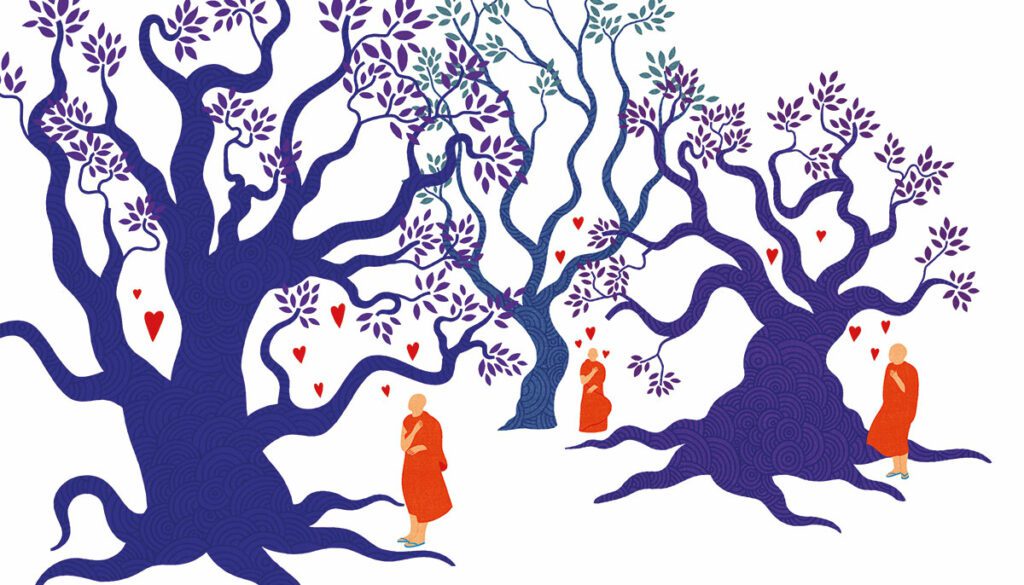
When the troubles of the world seem overwhelming, I use metta to address the suffering of beings both human and other-than-human. Even when I don’t know them by name, I send metta to individuals and communities experiencing drought, famine, human trafficking, and genocide.
Metta is a practice that can be done by those new to Buddhism, those who are long-term practitioners, and those who don’t identify as Buddhists.
How to Prepare for Practice
To engage in any meditation practice, one should situate oneself in a safe and quiet space. Ideally, one should be in a relaxed state of mind, and take a posture that’s comfortable for the body; however, not all of us have a private meditation room or a garden. While having a place that one regularly meditates in is ideal, it’s not necessary. What’s most important is our ability to find a space in which we can focus on our intention and the words of the meditation.
I always begin my practice by first grounding myself. It can be challenging to find a comfortable posture for a body, such as mine, which experiences chronic pain. Nonetheless, I begin by assuming a posture I can hold for at least ten to fifteen minutes, knowing I can adjust my posture if I need to do so. Someone new to meditation may choose a posture they can hold for three to five minutes. The Buddha taught that meditation can be done seated, standing, or lying down, and I advise students to choose what works best for their bodies.
If we are meditating at the end of the day, or after prolonged sitting at a computer screen, a little gentle rocking side to side or forward and back will help us come away from our to-do list and into our body and chosen posture.
Next, take a breath and notice the parts of the body closest to the floor. This can be the feet on the floor, the sitz bones on the cushion or chair, or the weight of the hands resting on the thighs or in the lap. If you’re lying down, you can focus on the long bones of the body lying on the bed or floor.
If locating the breath is difficult, placing a hand over the chest or the belly and feeling the rise and fall may be helpful. Feel the breath as it moves through the body, or feel a warm sensation where the hands touch the body.
After a few inhalations and exhalations, you can begin the meditation. The eyes may be closed, although if this doesn’t feel right, a soft gaze at the floor helps us release the outer world and focus on the internal work of the meditation.
The Four Parts of Metta Meditation
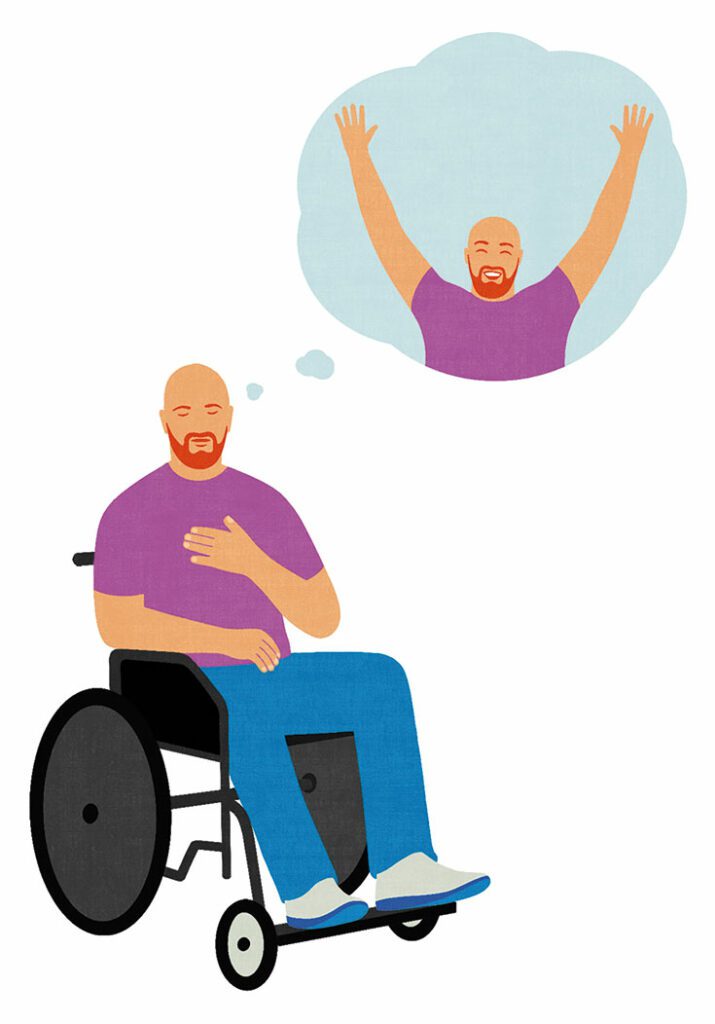
There are many versions of metta available, and they are commonly divided into short and long forms. The long version is the first version I learned. It speaks to my life experience and helps me enter the meditation more fully when I am agitated, even when I’m short of time.
As I practice it, there are four parts to metta meditation. The first part involves practicing metta for the self. This is how we begin because we cannot offer loving-kindness to others if we are not well resourced ourselves; we cannot invoke safety for another if we do not, even for a moment, feel safe ourselves. In a culture where we’re often criticized and encouraged to negatively judge our bodies, minds, abilities, and disabilities, the practice of metta helps us recognize that we have inherent worthiness and that we are deserving of respect, support, and tenderness just as we are.
One version of classic phrases in the long form states:
May I be safe and protected from inner and outer harm.
May I be strong and healthy in mind and body.
May I care for myself with ease and joy.
May I be happy, truly, truly happy.
In the second part of metta, we bring to mind a benefactor, someone who has helped or supported us. This can be a mentor, teacher, or beloved friend. As you recite the metta phrases, imagine that the person is standing or seated in front of you:
May you be safe and protected from inner and outer harm.
May you be strong and healthy in mind and body.
May you care for yourself with ease and joy.
May you be happy, truly, truly happy.
The third part of metta is dedicated to a neutral person, someone we do not know by name and with whom we have neither a negative nor a positive connection. They could be a bus driver, delivery person, or someone we pass in the street. As with the benefactor, we should visualize this person.
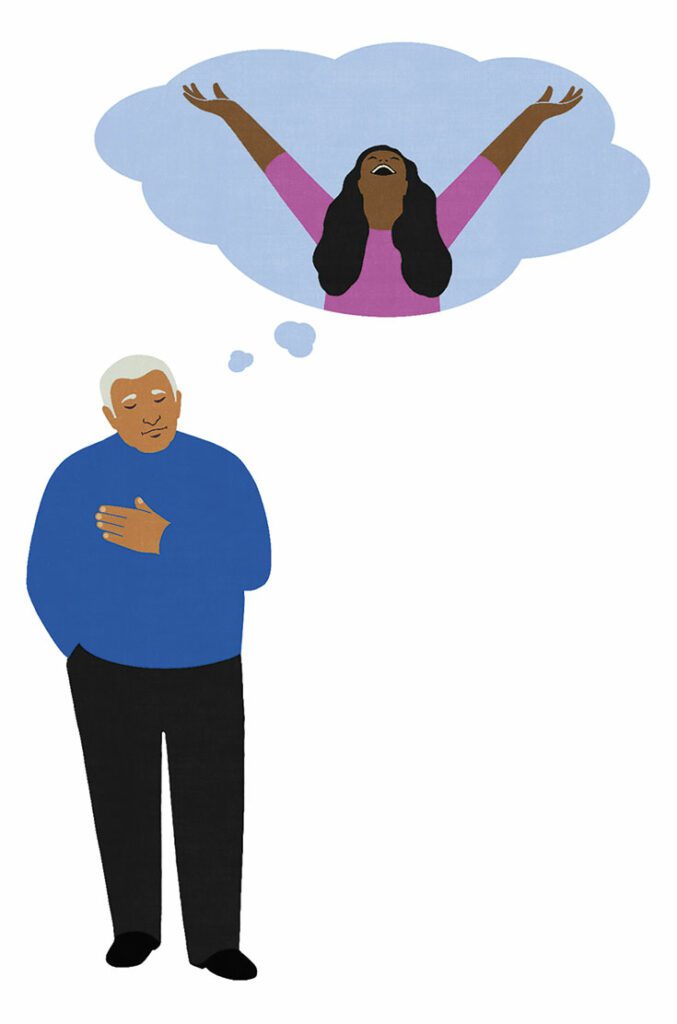
If we’re doing metta for people that we’ve never actually seen in real life, we can use images from the media or our own hearts. For example, if I’m doing metta for a particular group of people seeking safety in times of war, I might say, “May all those fleeing war in (name of country or area) be safe and protected from inner and outer harm,” while I picture people I’ve seen in a newspaper or other media. The phrases would then be repeated:
May you be safe and protected from inner and outer harm.
May you be strong and healthy in mind and body.
May you care for yourself with ease and joy.
May you be happy, truly, truly happy.
In the fourth and final phase of metta meditation, we invoke loving-kindness for the difficult person, someone with whom we are in conflict, or who has acted against us. Offering metta to someone who caused us lasting harm is an advanced practice. So, when we first begin offering metta to difficult people, we should begin with those who have caused us minor annoyance rather than those whose acts have evoked significant trauma. The phrases are the same as for the benefactor and the neutral person.
Note, if you are new to metta practice, you may want to just practice for the self or the benefactor before you move on to the neutral or difficult person.
Make the Practice Your Own
Some people find the long form of metta meditation difficult to remember and prefer shorter phrases. A shorter version uses phrases such as these:
May I be healthy.
May I be safe.
May I be happy.
May I live with ease.
Just as with the long form, one applies the phrases first to oneself, next to the benefactor, then to the neutral person, and finally to the difficult person.
Many contemporary teachers have adjusted the wording of metta to fit modern times. This is in line with the Buddha’s instruction to not speak in “high” or scholarly language, but to speak in the vernacular of the people to whom the teachings are addressed.
At the East Bay Meditation Center, where I teach, we have an affinity-group sangha, Every Body, Every Mind, which describes itself as “a weekly practice group for people living with disabilities, limitations, differences, and chronic illnesses.” Many in this sangha do not have strong or healthy bodies and feel it is harmful to affirm a state of being that denies the reality of the body they live in. Some of us require assistance to carry out the activities of daily living, and we cannot individually care for ourselves with ease and joy.
I now use these words for metta so that I may be more inclusive of all beings, regardless of their abilities and disabilities.
May you be safe and protected from inner and outer harm.
May you be strong and healthy in mind and body, and if that’s not possible, may you still experience moments of well-being and joy in the body you have.
May you care for yourself with ease and joy, and if that’s not possible, may you be cared for with ease and joy.
May you be happy, truly, truly happy.
Metta is a practice of great profundity. It embodies the Buddhist principle that hatred never ends hatred, but can only be healed by love. This is truly the medicine needed to heal our sick and ailing world. While we are each part of the world’s problems, the practice of metta invites us to be part of the compassionate solution to these problems by not engaging in feelings of enmity and hatred.
This article is from the March 2024 issue of Lion’s Roar magazine.
